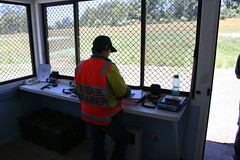The fleets of aircraft used in the United States are aging, and this is creating a challenge for both the NTSB and the airlines themselves. On average, most aircraft in service today are about fifteen years old and fly on average six flights a day. Even though they are inspected and serviced between flights, there are other factors that affect the aircraft that are not always obvious to the individuals who inspect and service the aircraft. The airplanes bodies are designed with flexibility, because of the changes in pressure in the altitudes they fly in. These changes in pressure are so substantial that the body of the aircraft actually inflates and deflates. Now when this factor is considered with the age and frequent flights occurred, the stress of the joints of the panels of the aircraft body is great.
In recent years, we have seen more than a few airplanes lose panels while in flight. These gaping holes range in size from a few inches to a few feet. When a hole forms in an aircraft while at high altitudes, the pressure inside the cabin is affected along with the oxygen levels for passengers and crew members. This is exactly why before a flight; the safety presentation includes the usage of oxygen masks for passengers. These safety presentations specifically state that an individual must first secure his or her mask first, before attending to anyone else. This includes when helping children. The reason for this is that within 30 seconds of lack of oxygen, a person can go into unconsciousness.
Due to these challenges, airlines throughout the United States and the world for that matter are now requiring a pulse oximeter to be stored in their safety medical bag. A pulse oximeter, also known as a pulse ox by some medical professionals, is a medical device used to measure the blood oxygen saturation and pulse rate of an individual. The new pulse oximeter that is found on airlines is a fingertip version, which simply clips onto ones finger and provides readings within seconds. A finger pulse oximeter runs on standard batteries and is able to withstand the variations in both temperature and pressure, which makes it a durable medical device for flight. Many airlines have put in orders for the devices already, and have already implemented procedures for their use as well.
The safety of both passengers and crew is very important to airlines, and therefore they strive to find new and better products to serve their needs.
For high quality, low-cost pulse oximeter models, visit us at http://www.PulseOximetersPlus.com.




